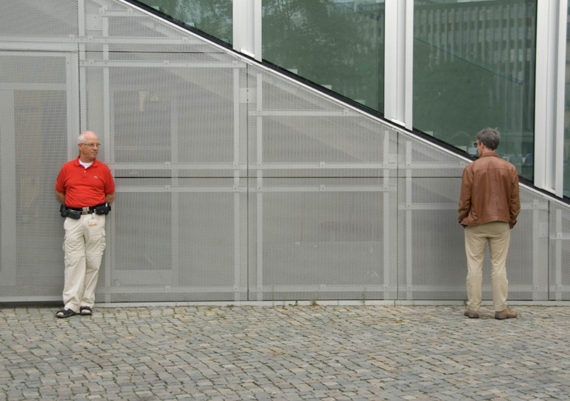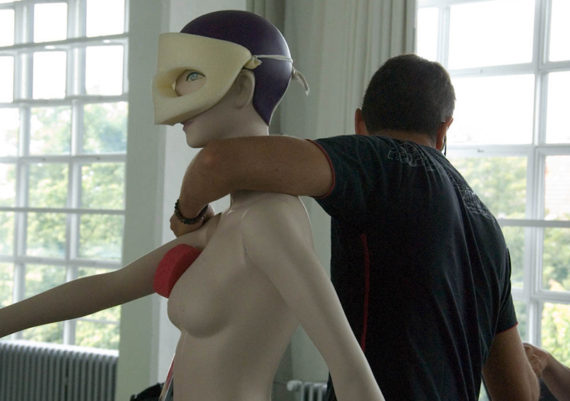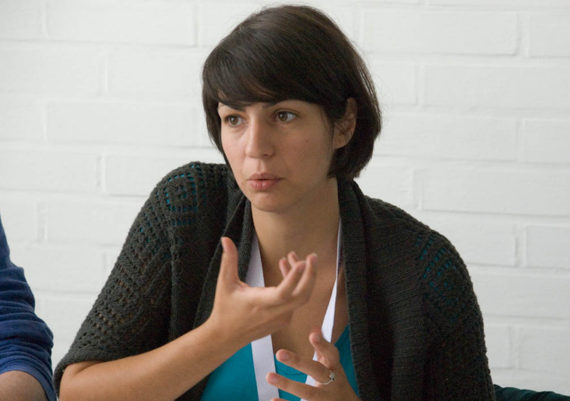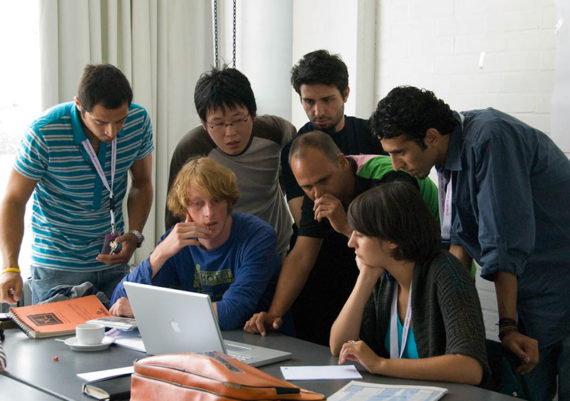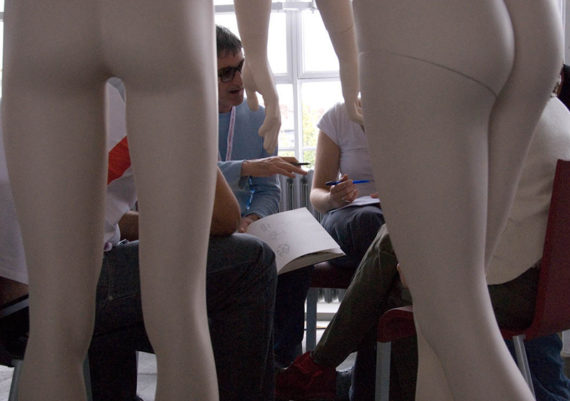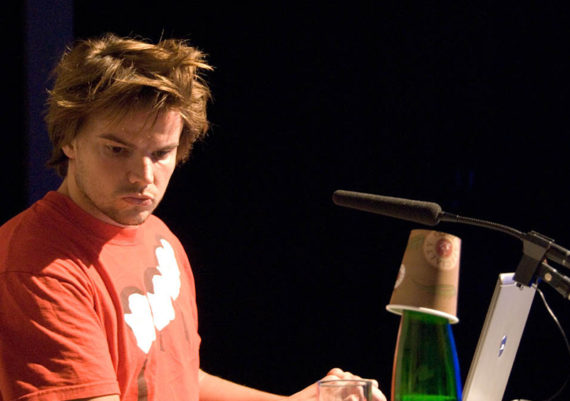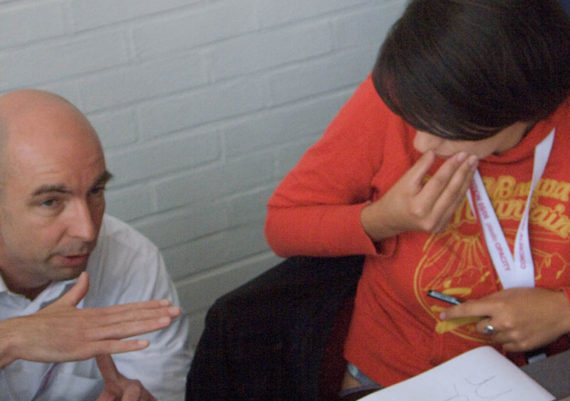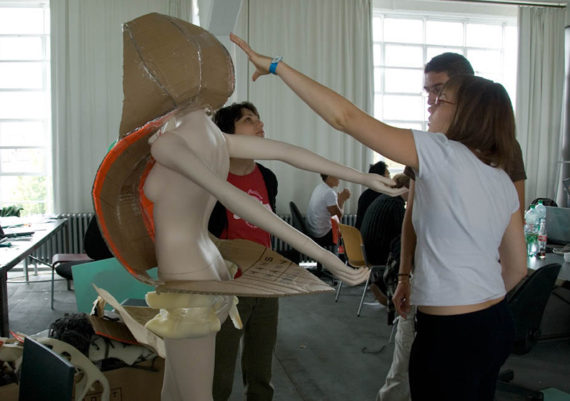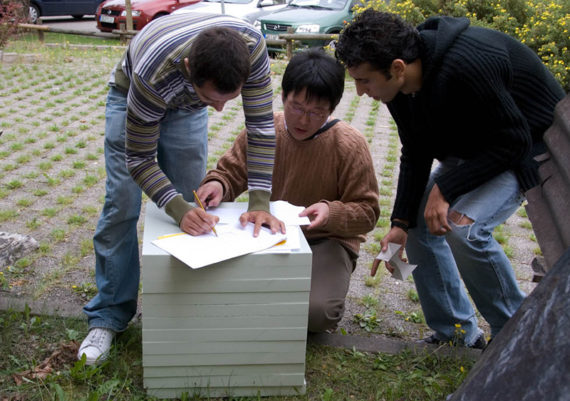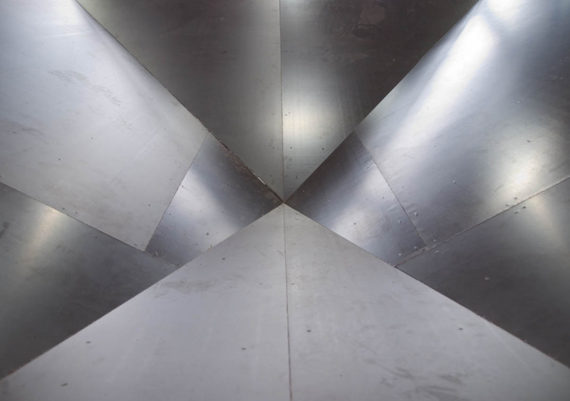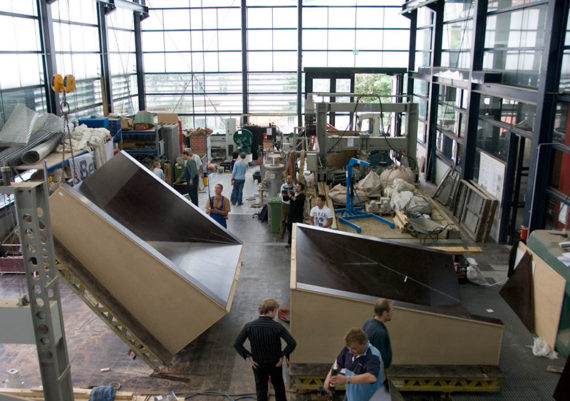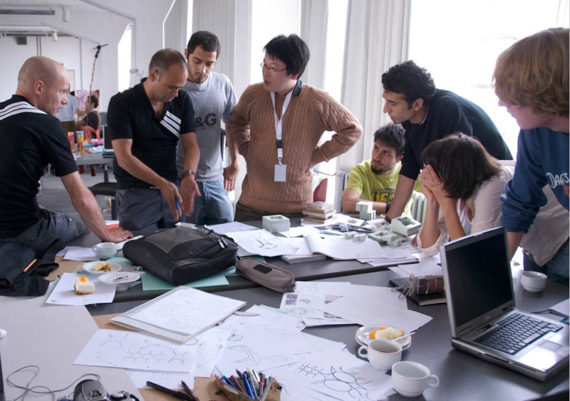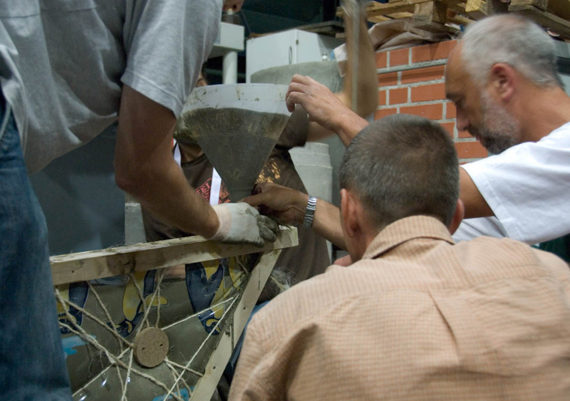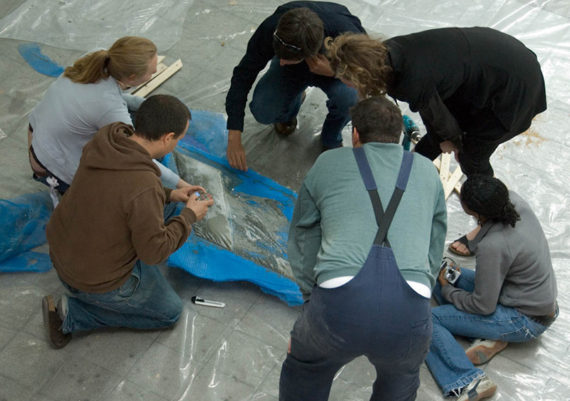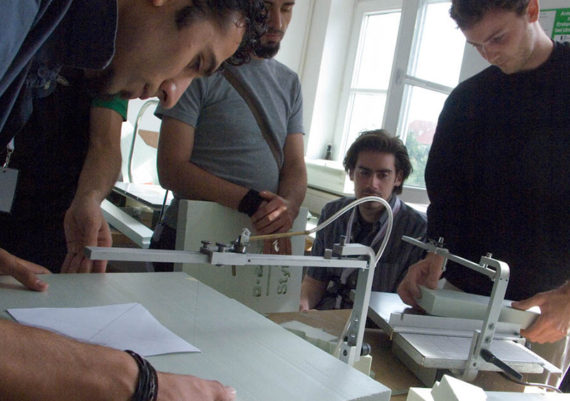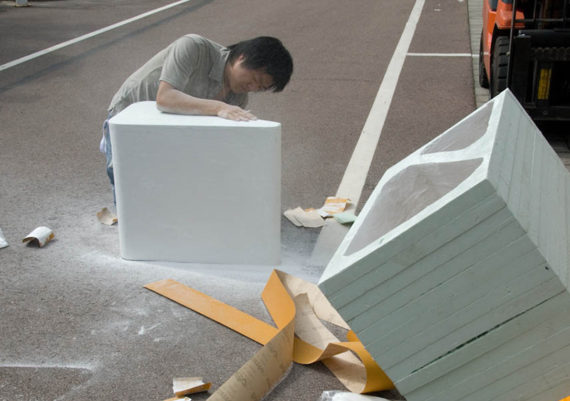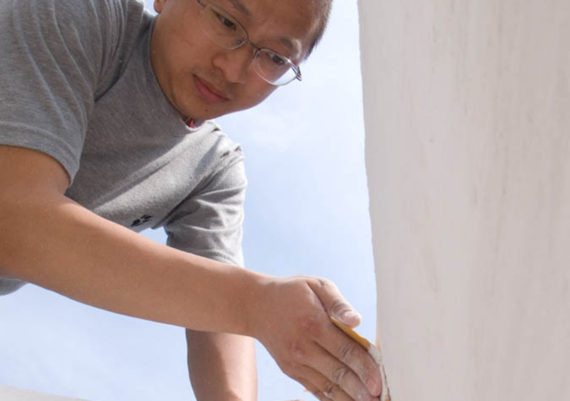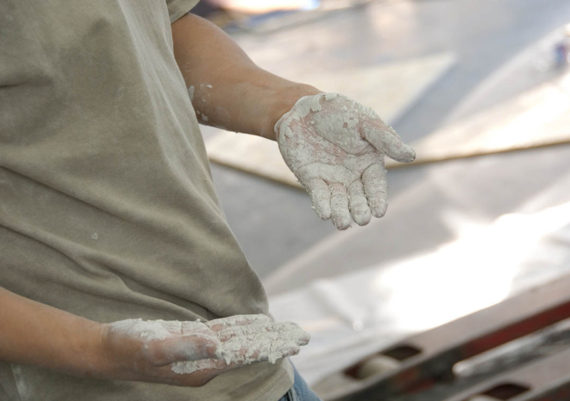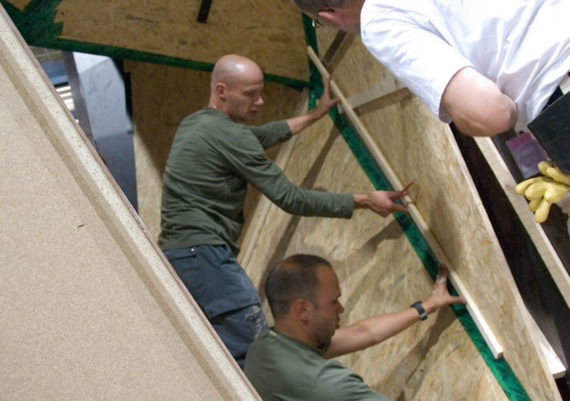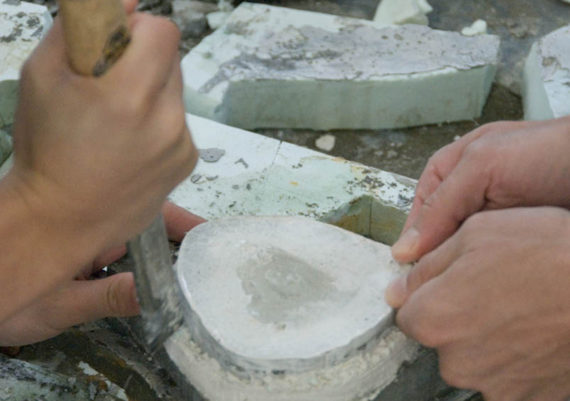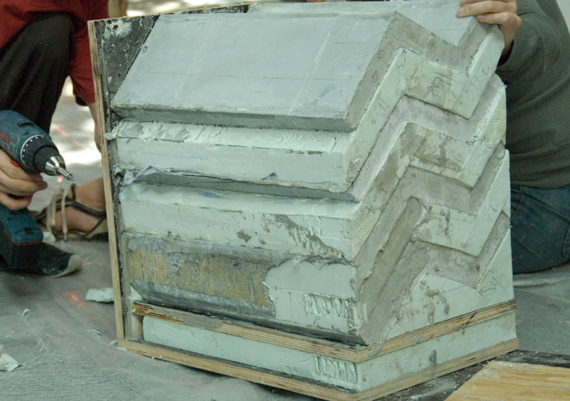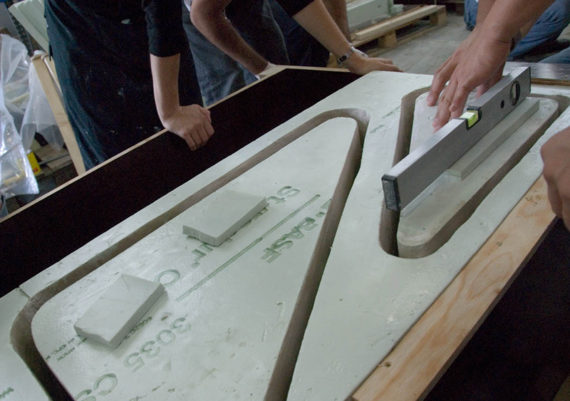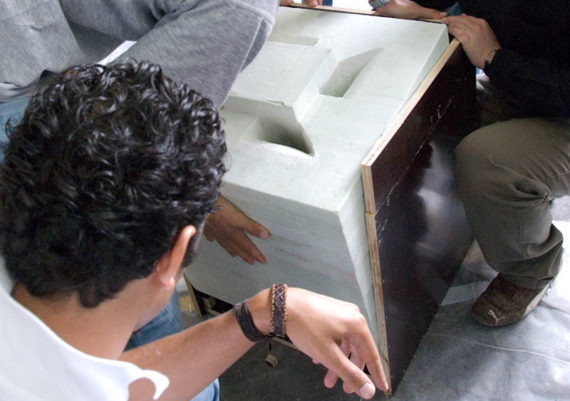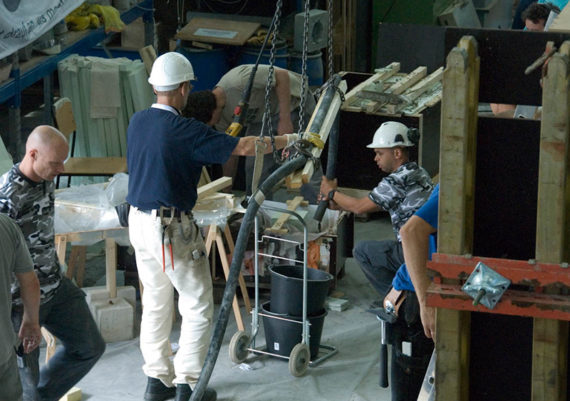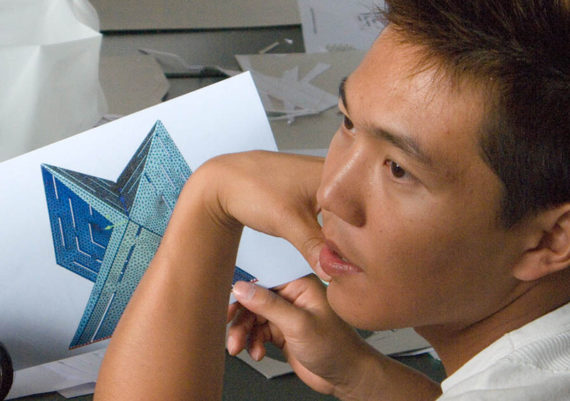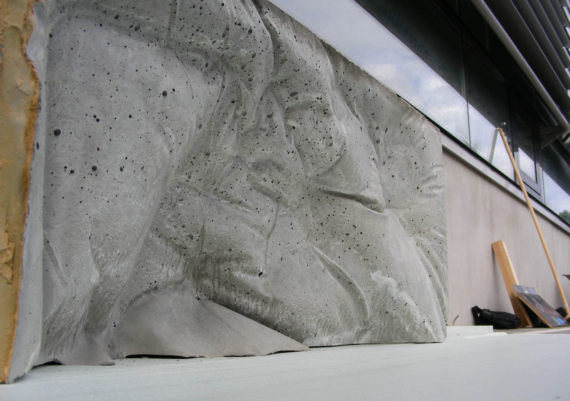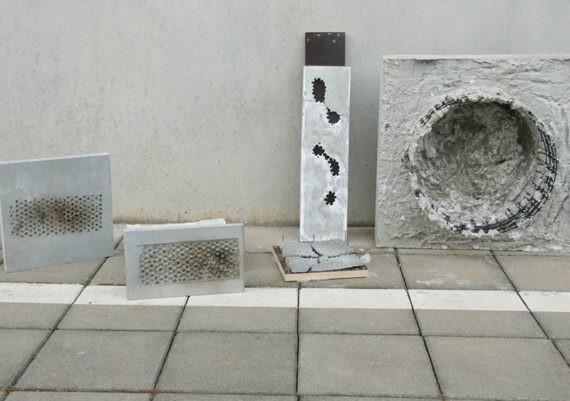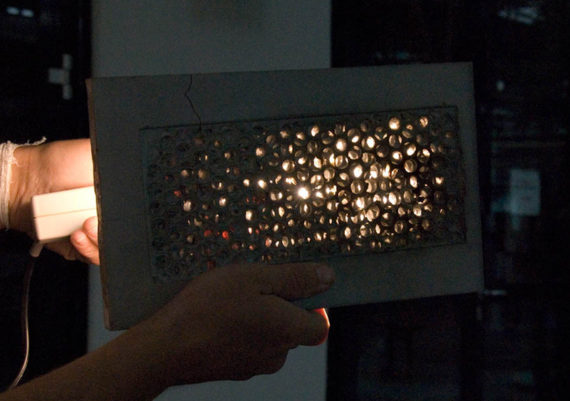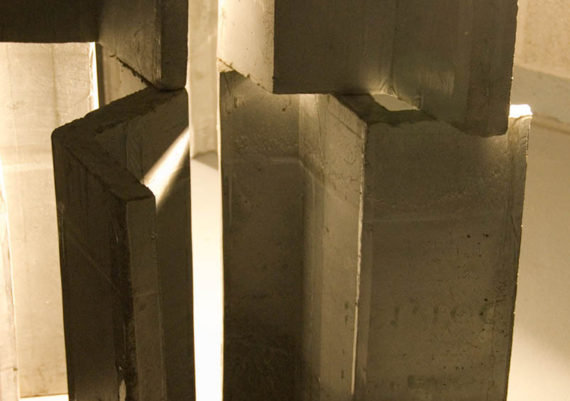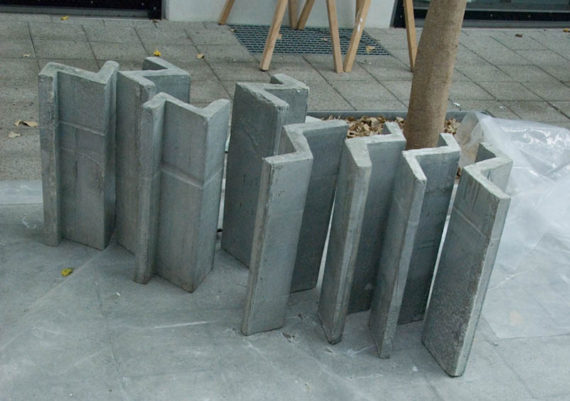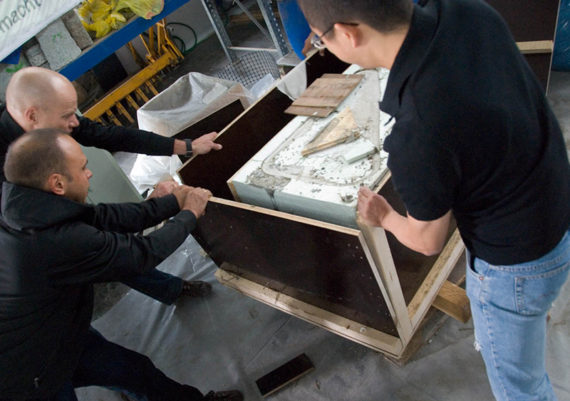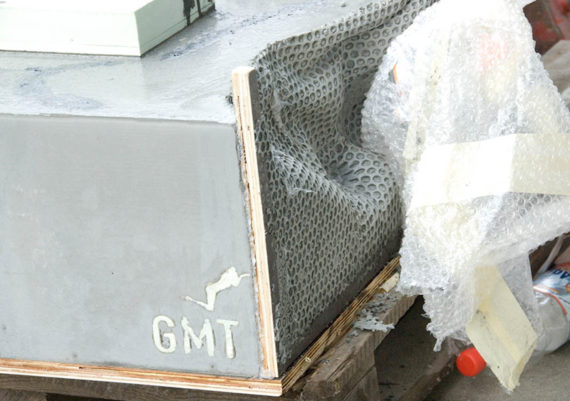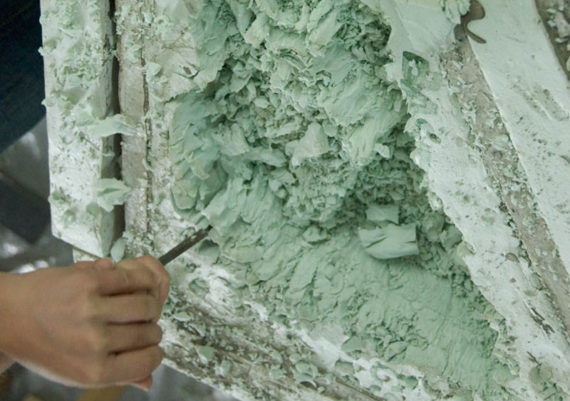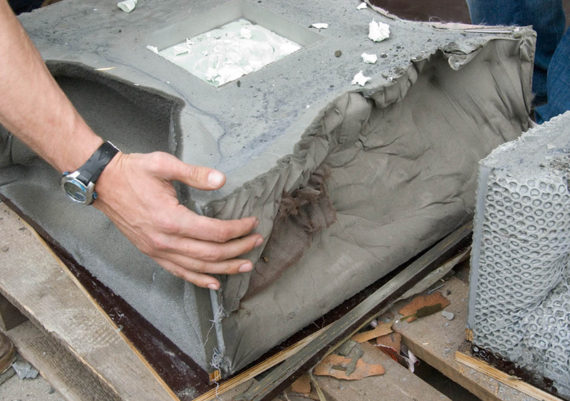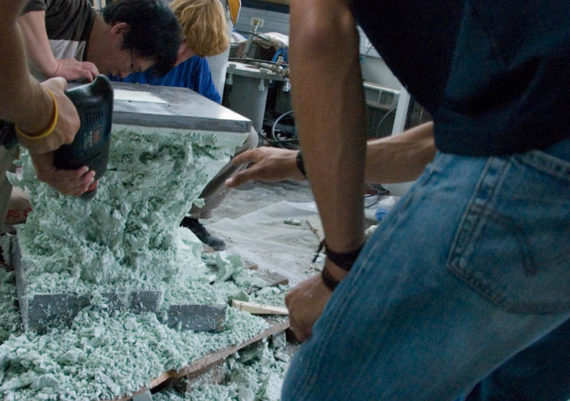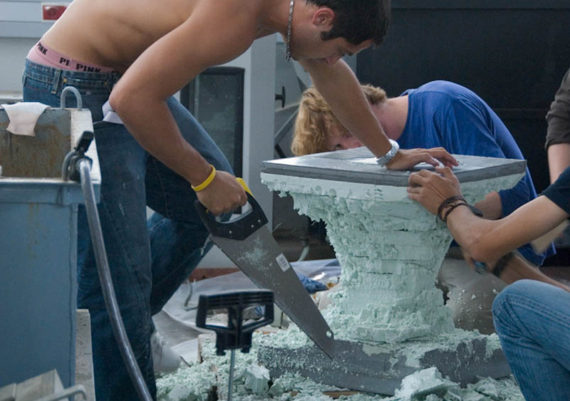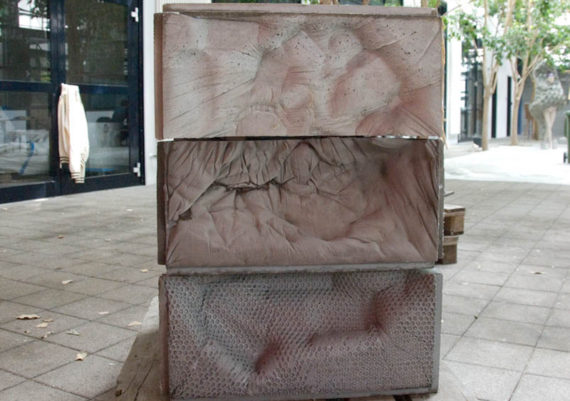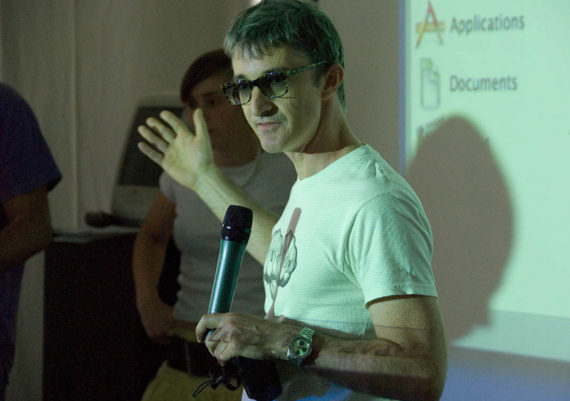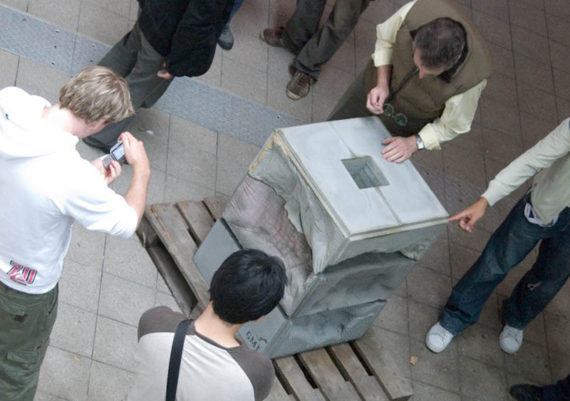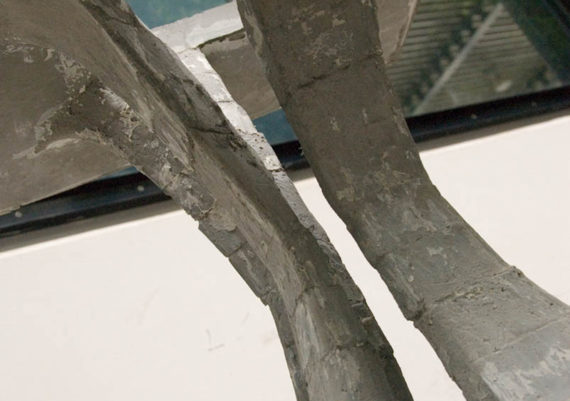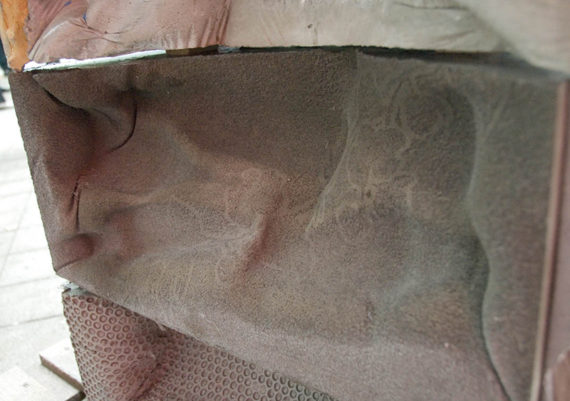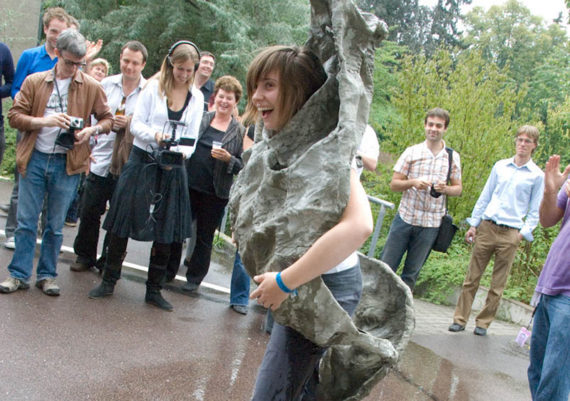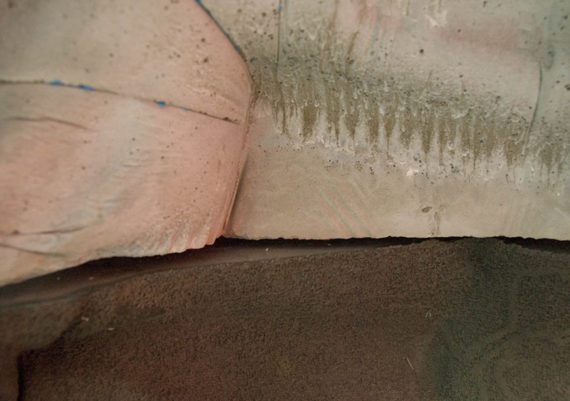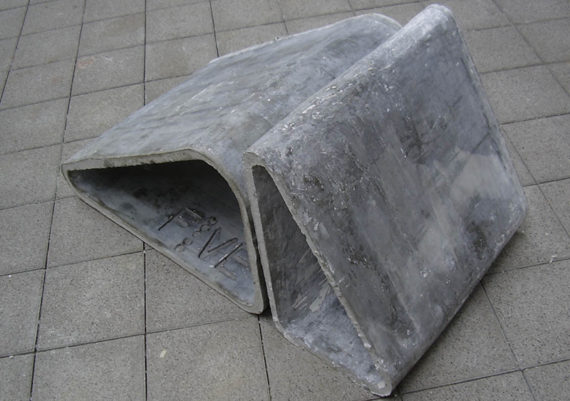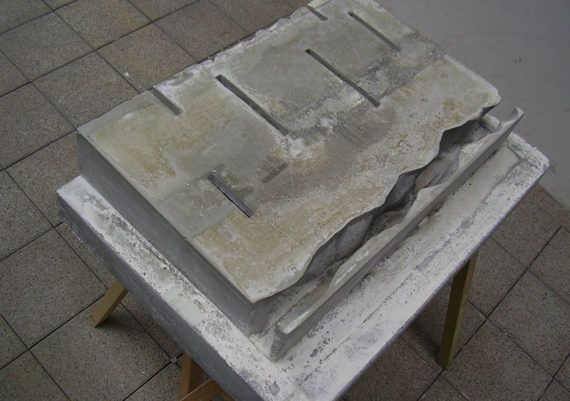concrete design competition & master class on plastic-opacity
Structural Engineer and director of Adams Kara Tayler, Hanif Kara, led the second cycle of the Concrete Design Competition under the theme plastic-OPACITY. He challenged the participants to explore a solid kind of transparency, in which the core properties of concrete being massive and moldable are exploited to generate a formal language that surpasses a solely heavy and dull 'traditional' experience of concrete.
2005 - 2006
concept, coordination & management, tutoring, publication
camera
Nicole van der Velde
video
bureaubakker
assignment
‘concrete is as concrete doesn’t’ – Massumi
Recent developments in concrete such as high strength concrete and self-compacting mixtures have improved its strength and processability. These new properties are bringing a different level of inspiration to architecture students and practitioners alike by generating new possibilities in themselves, which are much more than technical solutions to design ambitions whose motivations come from other sources. Already explorations of concrete’s inherent qualities such as mass, weight, density, strength and durability are leading to innovative applications. But new possibilities could open up an imaginative field if one could experiment with the degrees of opaqueness offered by concrete. If so, concrete would finally be able to add ‘transparency’ to its obvious plasticity, combining the two great characteristics of modern architecture in one material.
Various developments are engineering a shift in our notions of transparency and lightness in architecture. Ever more rigorous physical (or environmental) demands will reduce the surface area of glass in buildings, but advanced technologies mean this will not necessarily result in less transparency. Computing power allows us to identify structural ‘cold spots’ which can be ‘dematerialised’, and there are seemingly unlimited techniques for generating form. This opens the way to move from a ‘material transparency’ towards a ‘spatial transparency’ in which formal issues as depth, void and matter meet with material properties like texture, weight and solidity, offering experiences and interpretations of transparency that are generated by the opacity of the material. Paradoxically, exploiting concrete’s property of opacity offers the potential to experience and increase transparency, but it is a transparency in a ‘relative’ rather than an ‘absolute’ sense.
Concrete’s plastic characteristics – from fluid to solid, allowing for the production of complex forms, - combined with its mass and resilience allows for ‘free’ transformations while efficiently resolving structural and physical demands. We can envisage a truly three- dimensional architectural operation (even within the material itself) instead of a one dimensional ‘see-through’ performance. So plastic-OPACITY infers a spatial transparency, opening up to intricate engagements of shadows and light, tactility, relief and introducing techniques like weaving, punching and folding. It leaves the realm of the purely visual, and opens the door to programmatic, environmental and physical aspects as well as investigations of specific experiences of spaces, context as well as other architectural issues.
The discipline of design demands a reciprocal relationship that can move from idea to materiality as well as in the opposite direction moving materiality to idea. The dual or combined notions on plastic-OPACITY tap directly into some of the basic properties of concrete. Similarly it offers contextual, theoretical and pragmatic design considerations that are seemingly contradictory. This perhaps unnerving or slightly confusing quality needs to be imaginatively resolved by all entrants. Insights and interpretations that may very well differ completely from presented notions on plastic-OPACITY are welcomed and expected.
This competition seeks to investigate through research and design, any notion of plastic-OPACITY in or with concrete. It asks participants to embrace and explore opportunities implied by the dual and combined qualities of plasticity and opacity without particularly pinning down the literal or exact meaning of each property but allowing the pluralistic and phenomenal implications of both. Results of these explorations have to be presented through proposals that are ‘design-led’ – be it architectural, structural or otherwise – in order to reveal their relevance and merits by application. The proposals may range from objects, furniture, buildings and architectural details to housing, landscape interventions and other large-scale projects. ‘Traditional’ design criteria as programme, location, context, scale and so on, may be added freely by participants in order to structure their research and enhance the potential of their application. These can be derived from recent school projects such that the competition aims blend with current curricula as basis.
The judging criteria for entries will be framed by both the goal and means of the proposals which have to be delivered on two A1 boards (vertical) complemented by a digital version of the boards in a predetermined format (for details see rules).
The Concrete Design Competition on plastic-OPACITY 2005-2006 is open for students of architecture, engineering, design or related disciplines. Cross-disciplinary team-entries are especially encouraged. Students have to be registered at an educational institute in one of the participating countries – Belgium, Germany, Ireland, Italy, Netherlands, Sweden, Turkey and United Kingdom – at the time of the competition deadline, 15 May 2006. For information and registration please visit our website: www.concretedesigncompetition.com
Hanif Kara, curator
concrete design master class on plastic-opacity
The Master Class on plastic-OPACITY from August 19 till August 27 was the pinnacle of the Concrete Design Competition 2006/07. All national winners of the competition received as part of their awards an invitation to participate in the Master Class. And while in that sense it was the end of the biannual competition cycle it was also a separate investigation of the theme: plastic-OPACITY. This theme was adapted by the participants themselves during the competition; their entries were expressions of their individual interpretations of the notions on plastic-OPACITY set in motion by curator Hanif Kara. National juries, each within their individual realm of expertise and interpretation, selected the invitees to the Master Class, and from this point onwards the curator's involvement became most visible and prominent.
The Master Class did not seek to continue on the directions implied by the winning competition entries. It was organised as a continuation of a wide-ranging exploration, activating its own medium as a master class. This meant expert support - technical as well as intellectual -, the actual production of objects and foremost an extremely intensive period of teamwork. Teamwork in which the mix of cultures, differences in education - architecture, art, landscape design, engineering -, age and languages were maximised through a sheer explosion of energy and perseverance.
Before the 45 participants from 8 countries started the intense 6-day program at the Bauhaus Foundation in Dessau, they got together for a two-day excursion to Berlin. During this introduction there was ample time to get acquainted in between and during organised tours through the city. Besides amazing architecture and remarkable examples of concrete buildings and objects, a historical notion of Berlin was presented through the expertise of art:berlin guides.
Hanif Kara's intentions for the Master Class were quite straightforward, though challenging and wide-ranging. The scheme, worked out in close collaboration with his colleague Adiam Sertzu, was to produce a wide variety of concrete objects. Through the process of research, design and production, a series of major architectural issues, techniques and top-of-the-line materials would be explored. Working in eight groups, formed to generate an equal spread of expertise, the participants focused on various sized objects, from partial details to a 3 x 3 x 3 meter object. They dealt with producing their results at various scales, from 1:100 to 1:1. And were asked to address a range of architectural interactions relating to the human body, the landscape, interior, structural integration, and so on. Each group was presented with an assignment accompanied by a series of images. The assignments introduced the specific focus for the groups in an open and challenging fashion. Sometimes with just a few words or a set of short sentences to indicate the path of exploration. Each assignment was only really limited by the prescribed sizes of objects to produce, the type of concrete to be used and of course a set of non-negotiable deadlines; or so we thought.
The true spirit of a master class comes to surface through a seemingly hectic and definitely intense and well-supported program. The six-day schedule was jammed with lectures, critics, presentations, ample time for discussions, and featuring an apparently endless line-up of support staff. It involved our hosts from the Bauhaus Foundation and the FH Anhalt, Omar Akbar and Stephan Pinkau. Their staff worked fulltime manning the wood and concrete workshops and offering audio-visual and computer support. We had the pleasure to welcome the more 'hit-and-run' appearances of lectors doubling as critics invited by Hanif Kara: Bjarke Ingels, Ciro Najle, Stephan Engelsmann and Akihisa Hirata. They offered a full and balanced input for the development and realisation of the participant's ideas together with the support from experts from Schwenk Zement KG, PERI GmbH, Adams Kara Taylor and various organizing cement and concrete associations. Not to forget the essential contributions of a score of individual experts appearing as critics and tutors.
It was especially the work involved to realise the ideas and the unrelenting determination of the students that countered both the programmed as well as the unforeseen challenges. Dilemmas originated from enthusiastic ambitions, limited time frames, and 'state of the art' techniques and materials, meeting down to earth applications. It was the atmosphere of improvisation together with conditions of intense collaboration and focus on results that led to an overwhelming outcome. We have the objects, beautiful ones exploring the visual and tactile qualities of concrete. We were introduced to innovative techniques not seen in architectural applications before. Furthermore, investigations have started probing the limits of formwork techniques, concrete mixtures and pouring methods. However, none of the objects could have been achieved without the teamwork, and direct collaboration between designers, engineers and industry; a first time experience for most of the participants. This type of collaboration is seen by many contemporary professionals as the most promising format for innovative design practice. The direct communication between all partners in a design and production process offers a dynamic platform with which constructive criticism as well as early testing can be achieved. The most significant impact was exactly this type of process, the interactive cross-disciplinary development from assignment to results. Starting with refining ideas, managing them through selection procedures and finally mastering the handicrafts involved in working with concrete. Each group presents their processes, ideas and objectives in a separate part of this publication through their own stories. And it was these processes, for all participants as well as for the staff of the Concrete Design Master Class on plastic-OPACITY, which made the encounter unforgettable and rich in emotion and experiences.
The Master Class offered an intense and full platform for investigating the overall theme of the competition cycle. A collaborative platform that would be drastically different from conditions encountered when individually developing a competition entry. In activating its own setting and momentum it triggered a plastic-OPACITY of ecology, of spatial experiences and of structural applications; surpassing the expectations of the initiators. The seriousness in which the preliminary hunches were developed into proposals and objects lays claim to a fertile foundation for renewed potential and properties of concrete.
Albin Ahlquist, David Berkvens, Emre Demirci, Hakan Demirel, Paolo Diglio, Sara Eriksson, William Flint, Mark Philipp Gabriel, Daniele Ghiglione, Pinar Gökbayrak, Matthieu Götz, Eelco Grootjes, Kyeong Keun Han, Paul Jeffries, Arnaud Kinnaer, Lars Höglund, Yongcchun Kim, Seda Kurt, Timothy Lee, Francesca Maffei, Gerard O'Mahony, Lotte Mattelaer, Martin Palmlund, Valentin Pierron, David Ralph, Hala O'Reilly, Marieke Rongen, Stefano Serventi, Ian Shek, Aldo Sollazzo, Louise Souter, Paolo Spadafina, Gergana Stavrera, Alaistair Steele, Wei Sun, Onur Tanik, Annalisa Torta, Nick Turvey, Sami Matin Uludogan, Bruno de Veth, Burçin Yildrim, Vincent Young
curator
Hanif Kara
tutors
Siebe Bakker, Henk Ovink, Adiam Sertzu, Christian Tygoer
critics & experts
Guy Châtel, Stephan Engelsmann, Werner Möller, Ciro Najle, Elisabeth Plessen
lecturers
Akihisa Hirata, Bjarke Ingels
support
Annekatrin Arndt, Sebastian Czerny, Lazlo Czutoras, Robert Demel, Jörg Dietrich, Michael Drewniok, Norbert Esch, Michael Fink, Beppe Gallo, Guido Lau, Uhle Lehman, Mario Leitzmann, Melissa Liando, Peter Lieblang, Heinz-Peter Lüdike, Roland Mellwitz, Yuki Oh, Torsten Pauer, Ilona Riske, Ric Sai, Wolfgang Schäfer, Botho von Senger und Etterlin, Eliana Stazi, Gisela Trögele, Nicole van der Velden
host
Bauhaus Dessau Foundation - Omar Akbar
FH Anhalt - Stephan Pinkau
initiative
ATIC - Maria Dulce Louçao
BDZ - Jörg Fehlhaber
Betongforum - Anita Stenler
Cement&BetonCentrum - Hans Köhne
The Concrete Centre - Allan Haines
FEBELCEM - Jef Apers
Irish Cement - Brendan Lynch
TCMA - Çaglan Becan
photography
Laszlo Czutoras, Melissa Liando
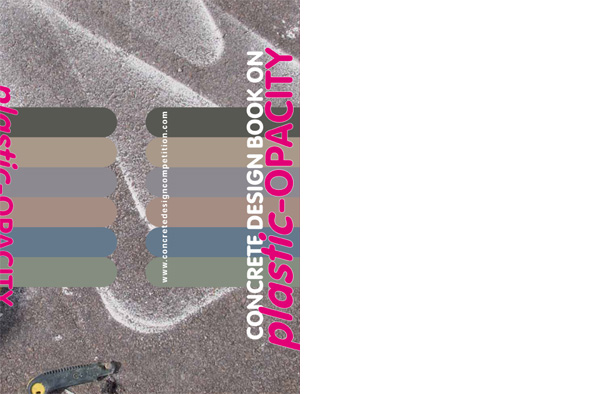
concrete design book on plastic-opacity
2006 / English
Documentation on the Concrete Design Competition on plastic-OPACITY and master class for laureates, led by curator Hanif Kara. Including nominees competition, jury reports and photo documentary master class. With texts by Hanif Kara and Siebe Bakker. Interviews with Hanif Kara, Ciro Najle, Bjarke Ingels, Akihisa Hirata, Harry Gugger, Joop Paul and Christian Schittich by Olv Klijn.
editor:
Siebe Bakker - bureaubakker
photography:
Laszlo Csutoras & Melissa Liando
graphic design:
Manifesta
download pdf
backflap
'Concrete is actually a very old material. The romans even used it. But it's still contemporary. recent developments concerning the strength, weight an durability are prompting innovative applications of this material. One property of concrete that has hardly been studied is its transparency. Transparency not in the literal sense of a property possessed by glass for example, but transparency in the spatial sense: opacity.
Apart from the historical reason to reconsider concrete opacity, there are more contemporary issues such as insulation and sustainability to be introduced, parameters that are reopening the chapter in ;opacity' with contemporary architecture. In most cases this is achieved by working with various types of glass and metal, but I think it should also be possible by using concrete.
Combining such a notion of opacity with the inherent plastic character of concrete could lead to an interesting play in which spatial definitions such as dimensions, depth and orientation could be linked to material properties such as weight, color and texture.'
Hanif Kara, curator
